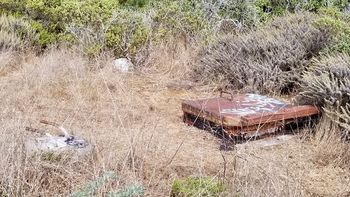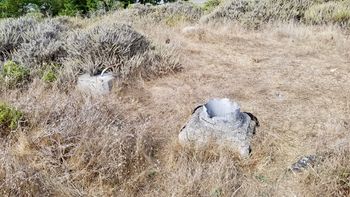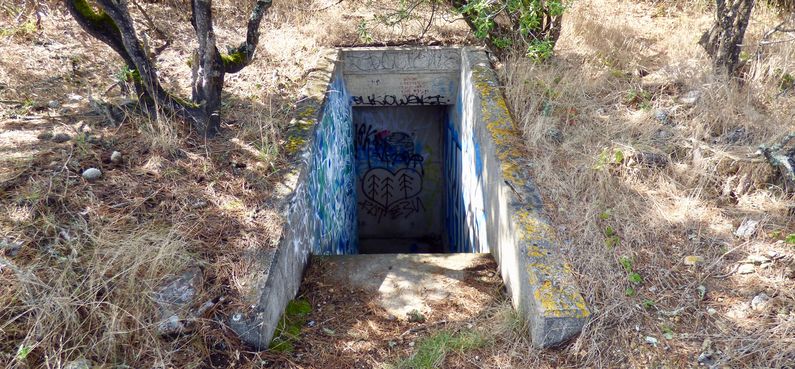Hill 640 WWII Radar Site
|
Hill 640 WWII Radar Site (1943-1946) - A World War II U.S. Army Radar Site established in 1943. Used to provide fire control information to large caliber (6" and above) coastal gun batteries in the Harbor Defense of San Francisco against enemy warships. Located on Hill 640 Military Reservation near Stinson Beach, Marin County, California. Closed in 1946.
HistoryPart of the Harbor Defense of San Francisco.
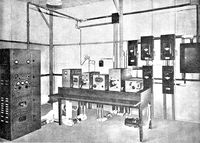 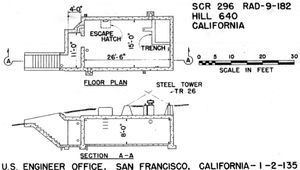 Constructed under project No. RAD-9-182 and transferred for use on 20 May 1944 as Hill 640 WWII Radar Site. Construction costs to date of transfer were $14,578.32. The physical plant consisted of a transmitter building and one powerhouse with a 1000 gallon fuel tank. The buildings and the tower were placed on concrete pads and footings installed by the Corps of Engineers who erected all of the structures. Access to the top of the 25' antenna was by a small hoist operated by an electric motor. The engineering construction work was done by government forces. The radar equipment was installed by the Signal Corps. It required 16.3kW of 120/240 AC, 1 phase, 60 cycle power furnished by commercial power backed up by the on-site generator. The 25 kW generators were furnished and installed by the Signal Corps.
Site Operation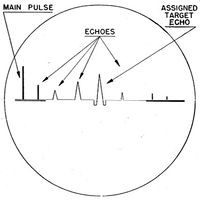 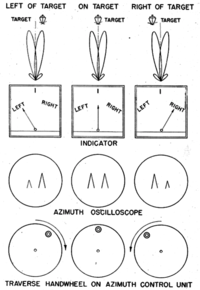 In operation, the SCR-296-A radar could only track one target at a time. Target assignments were made from the harbor HECP/HDCP command posts by telephone, citing the approximate range and azimuth of the target using the SCR-582/SCR-682 search radar and/or optical spotters. The SCR-296-A radar operators would then find the target and pass the precise range and azimuth to the plotting room at the gun battery by phone. Two operators were required, one for the range position and one for the azimuth position. The radar operators would continue to track the target and update the plotting room as the range and azimuth changed. Once the shore battery fired, the SCR-296-A could detect the water splashes of near misses and provide adjusting information by voice commands such as "300 short" or "500 long". 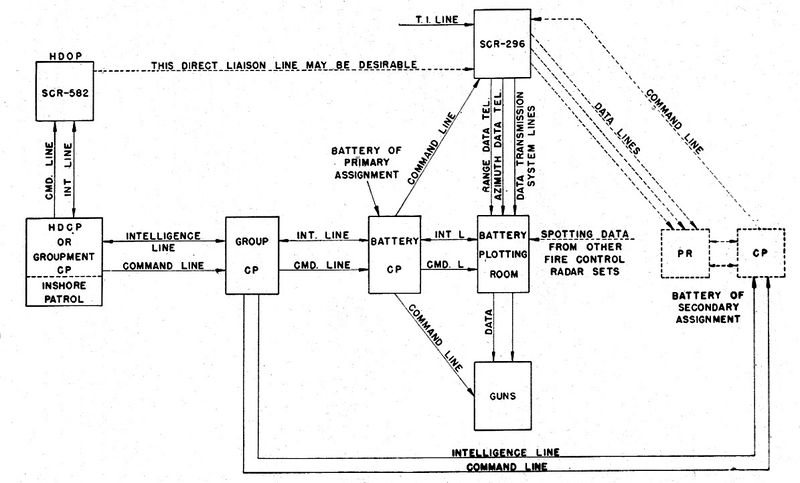 In operation, the range accuracy was about ± 30 yards while azimuth accuracy was about ± 0.20 degree under the best conditions. The set had a dependable range of 20,000 yards on a destroyer size target when properly sited between 150 to 500 feet above sea level. The operating crew consisted of 5 men plus a power plant operator and radar maintenance man. The Radar track data was provided by telephone to support Battery Smith as the primary battery and to secondary batteries including Battery Guthrie, Battery Wallace (2), Battery Rathbone and Battery 243. Battery Smith was a 6" gun battery located on Fort Barry.
ClosureThe SCR-296A Radar equipment was declared obsolete by AG letter on 17 Jan 1946. The Tower and radar equipment were to be disposed of while the buildings were to be retained. Physical Plant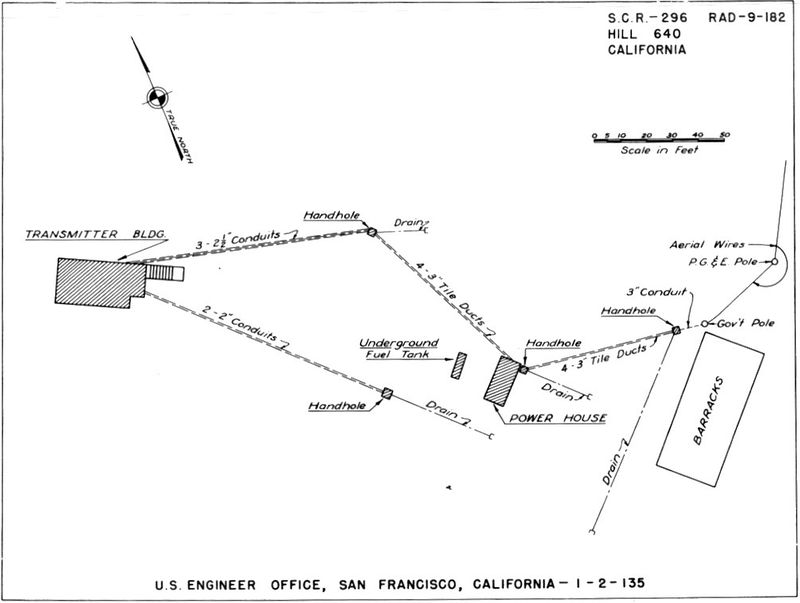 The transmitter building for this radar set was built as a dug-in type reinforced concrete structure with the antenna tower supported by four concrete piers on the reinforced concrete roof. The transmitter building site was then backfilled so that the roof was covered with a layer of earth and only the back entrance, the four antenna supports, a vent, an escape hatch and cable conduits were exposed. The radar site was located on the Hill 640 Military Reservation which was the location of several fire control base end stations that provided part of a manual fire control system that relied on optical observation. Below the back entrance of the radar transmitter building was small cantonment area with a small 16 man barracks and support facilities. Commercial power was brought to the site on overhead wires and transitioned to underground service on the military reservation. Commercial power then ran to the standby generator shed and from there to the underground transmitter building. Communications facilities on the Hill 640 Military Reservation included a fire control switchboard and a repeater station. Communications facilities from the radar site included a 25 pair telephone cable northward to Bolinas Bay and a 50 pair telephone cable southward to Frank Valley and from there on to Fort Cronkhite and on to the HDCP at Fort Scott. The landline communications were backed by an emergency radio network. Current StatusAccess to the site is by a wide trail from the Panoramic Highway pullout for the Whitegate Ranch Trailhead. There are two trails at this pullout, the radar site is accessed from the lower trail. The site can be identified by a large tree adjacent to the left side of the trail and a smaller tree on the right side. The radar site transmitter entrance is located by the smaller tree. The metal entrance door is locked and there is no access to the transmitter room interior. Above the transmitter building, the four concrete antenna support pads can be seen along with the vent pipe and the escape hatch cover. Near the larger tree the foundation remains of the cantonment area can be seen along with the concrete pad of the generator building. Over the hill, a series of fire control stations snake down the hillside.
See Also:
Sources:
Links: Visited: 8 Sep 2017
| ||||||
